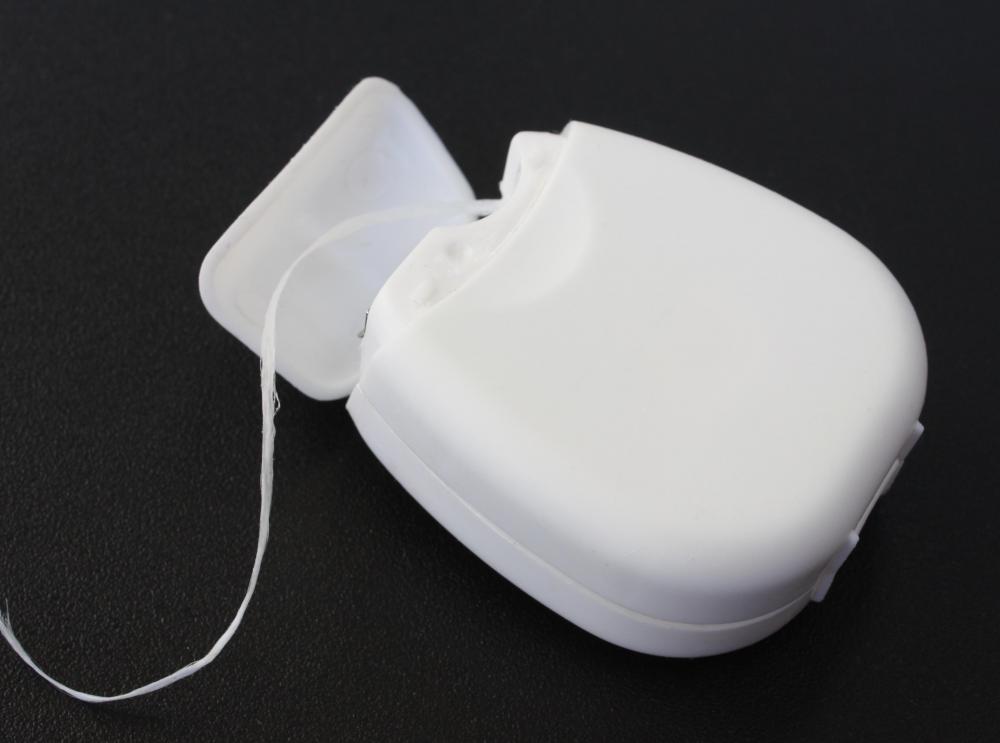At WiseGEEK, we're committed to delivering accurate, trustworthy information. Our expert-authored content is rigorously fact-checked and sourced from credible authorities. Discover how we uphold the highest standards in providing you with reliable knowledge.
What is the Proper Way to Floss?
Flossing the teeth is an important way to ensure that teeth remain healthy and strong. Using dental floss helps to remove plaque and debris that a toothbrush cannot reach. Tooth decay and periodontal disease traditionally begin in the hidden areas of the teeth, the places where teeth connect. For this reason, it's important to learn the proper way to floss. A good way to floss the teeth is to use about 18 inches (45.7 cm.) of dental floss.
The floss should be wrapped around the middle fingers. A small section of the floss is then manipulated between two teeth using a gentle back and forth motion. The dental floss should be brought to the gum line but should never be forced underneath the gums. Hold the floss in a "C shape" around the side of the tooth as the floss is slid beneath the line of gums. This gentle sawing motion should be used for all of the teeth.
It's important to remember to floss the back sides of the back teeth as well. Always use a clean section of dental floss for each tooth. Rinse the mouth with water after flossing in order to remove any food debris still lingering in the teeth.

People should floss their teeth at least once or twice a day. Most dentists suggest that their patients use unwaxed dental floss as it is thinner and can more easily slide through small areas between the teeth. When a person first begins to make dental flossing a part of his or her routine, it is common for the gums to bleed. Once the person begins to floss on a regular basis, gum bleeding should stop. If a person's gums continue to bleed after maintaining a flossing routine, he or she should contact the dentist.

It's important to learn the proper way to floss because merely brushing the teeth does not prevent tooth decay and gum disease. Failing to floss can increase the amount of plaque buildup on the teeth. After a couple of days, this plaque hardens and becomes tartar. Tartar can only be removed by a dental professional. If a person learns the proper way to floss, plaque never has the opportunity to harden into tartar.

Learning the proper way to floss takes practice and persistence. A dentist can demonstrate proper techniques by using a model of human teeth. This will help patients visually understand the most effective way to floss. Some people even develop the habit of flossing by remembering to floss as they watch television or listen to music. The best time to floss the teeth is right before bed at night, as this is the time when plaque is actively making cavity-producing acid in the mouth.
AS FEATURED ON:
AS FEATURED ON:













Discuss this Article
Post your comments